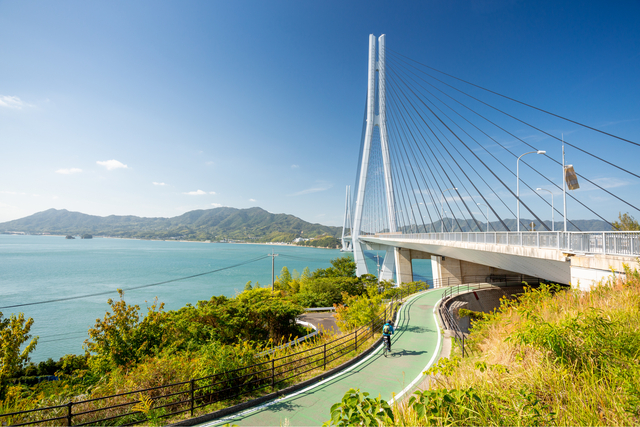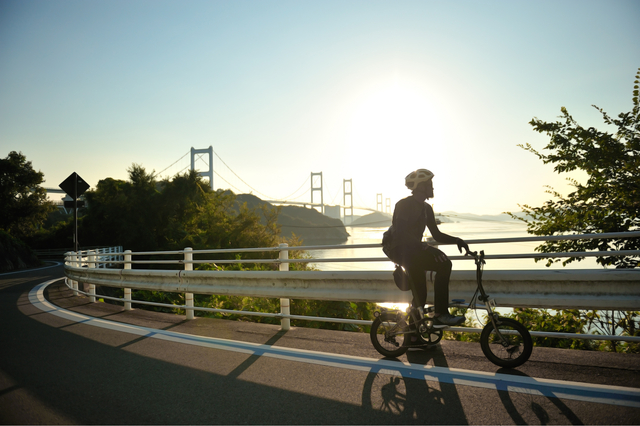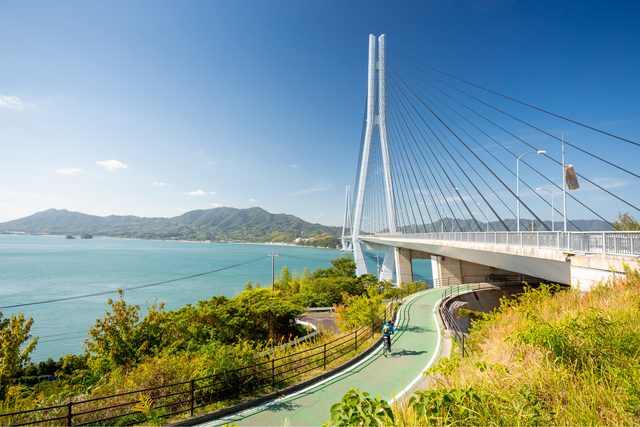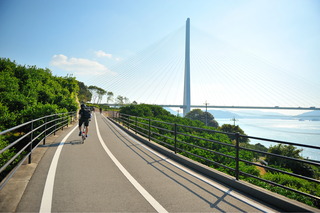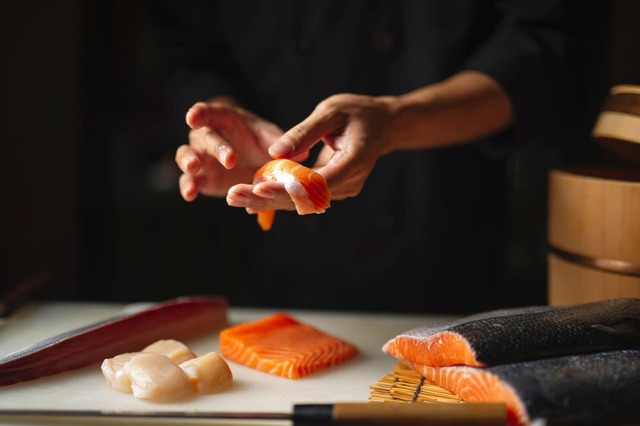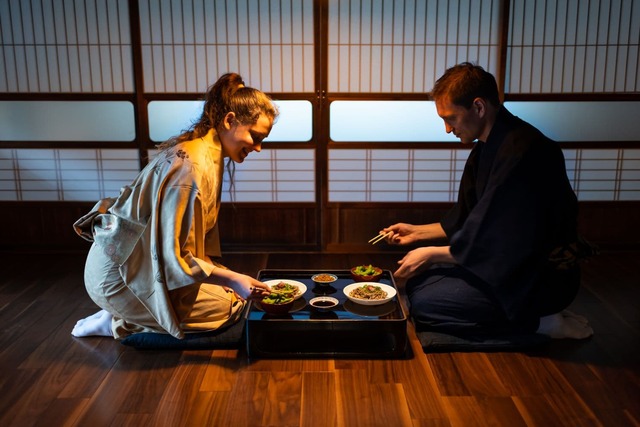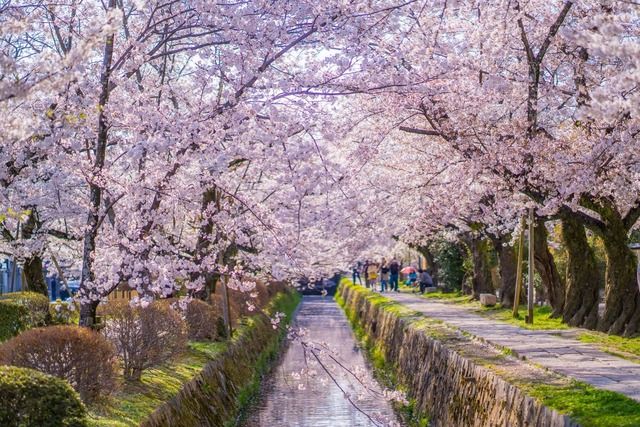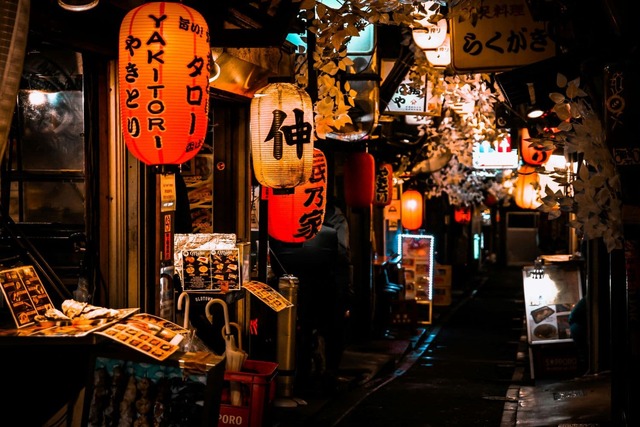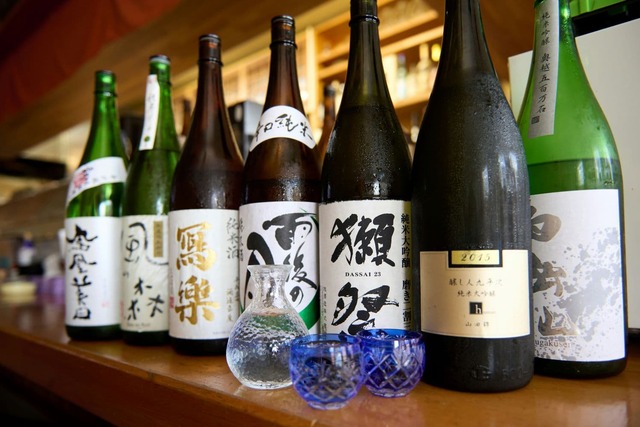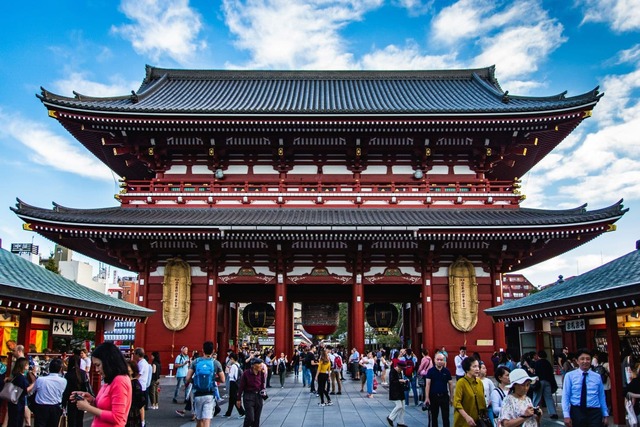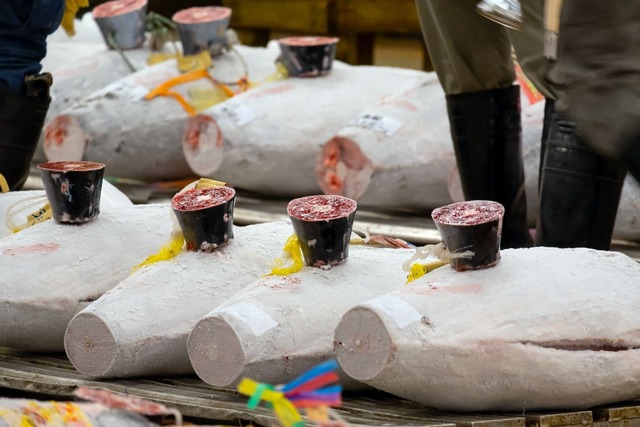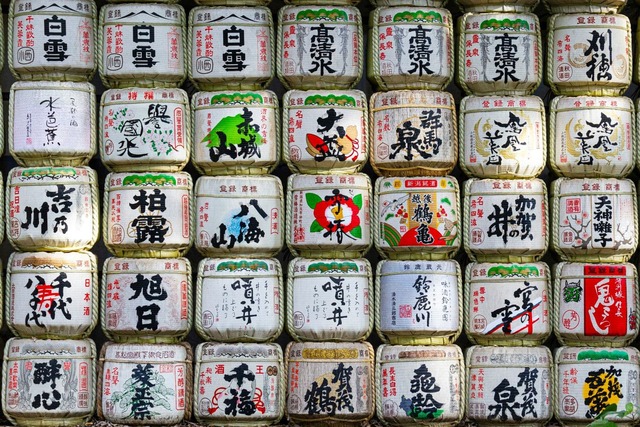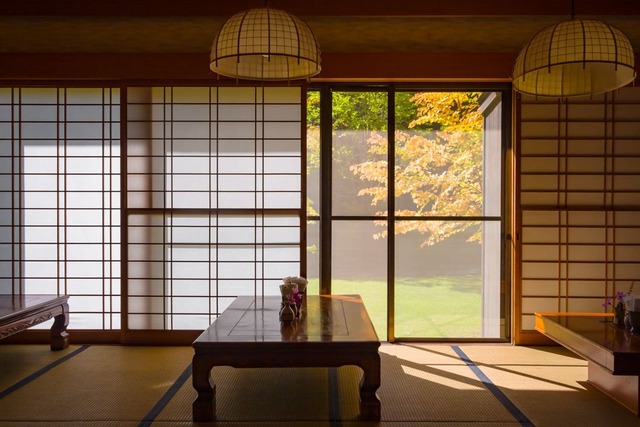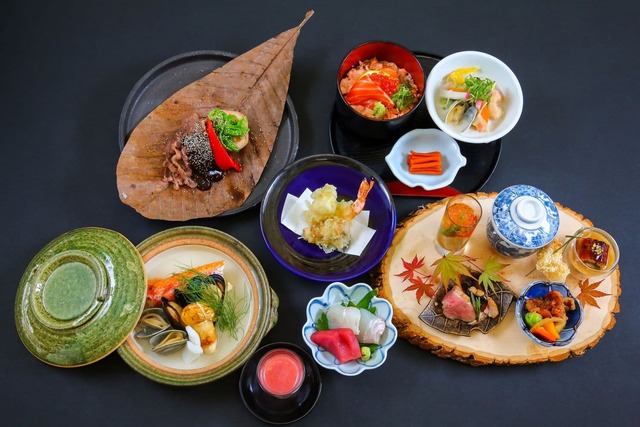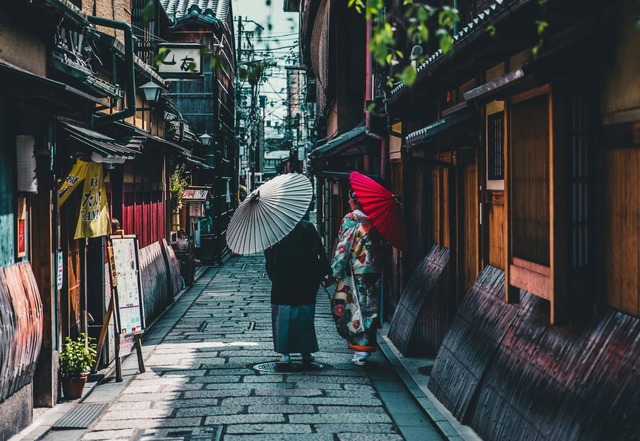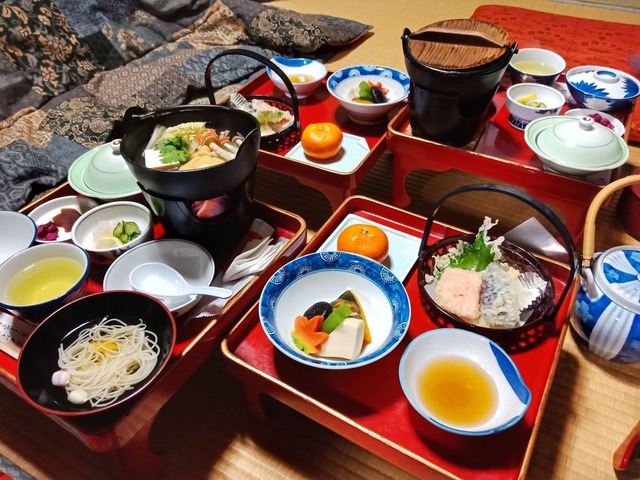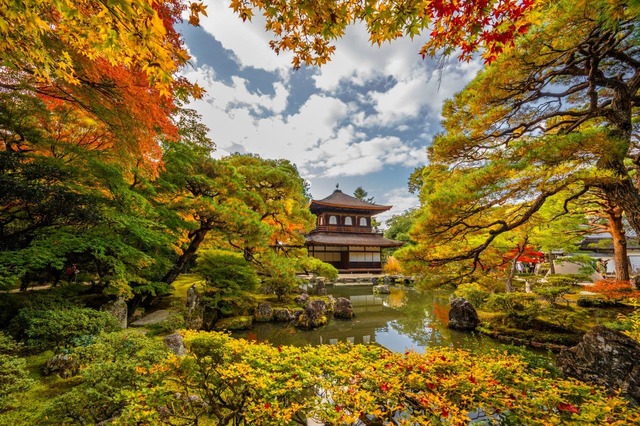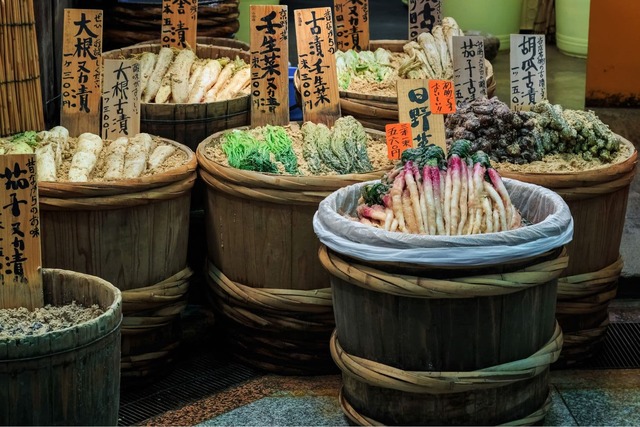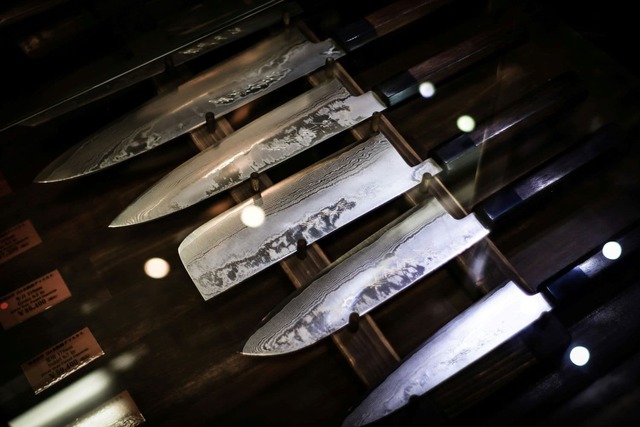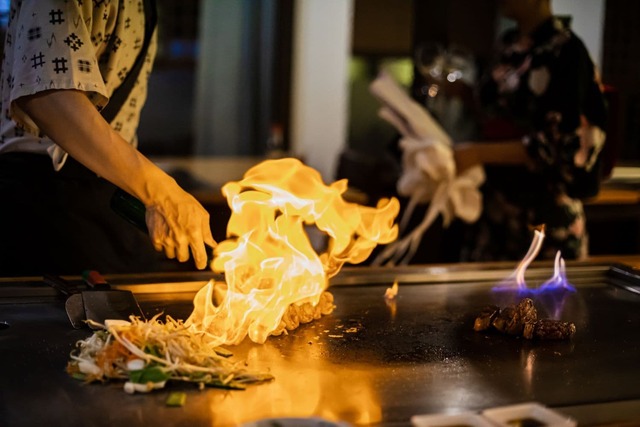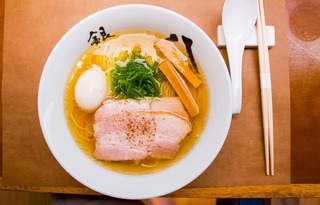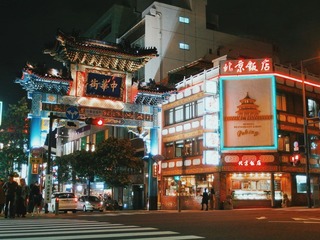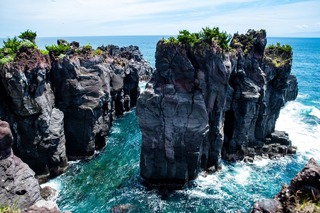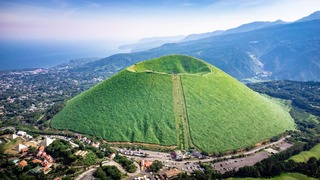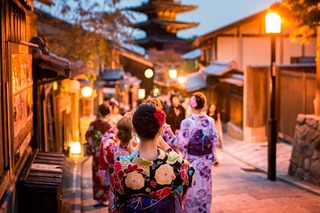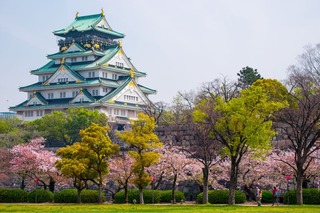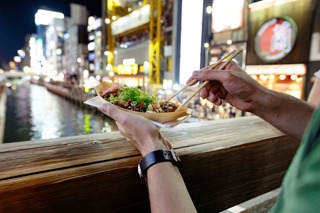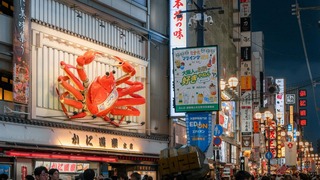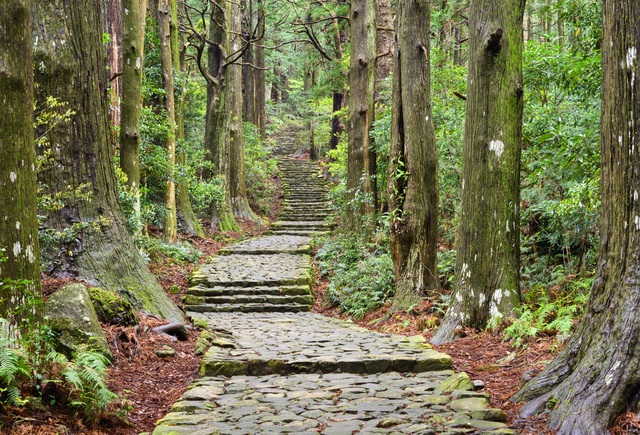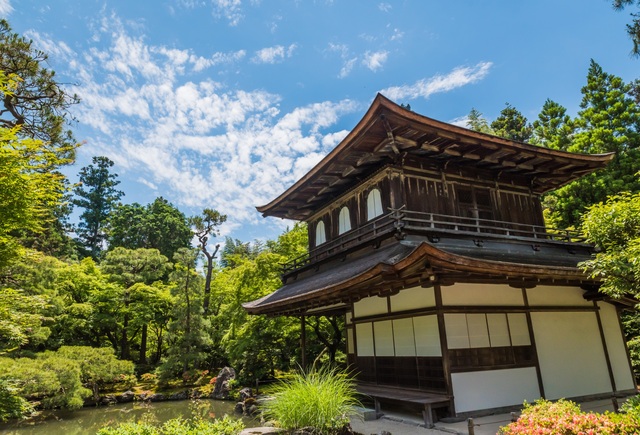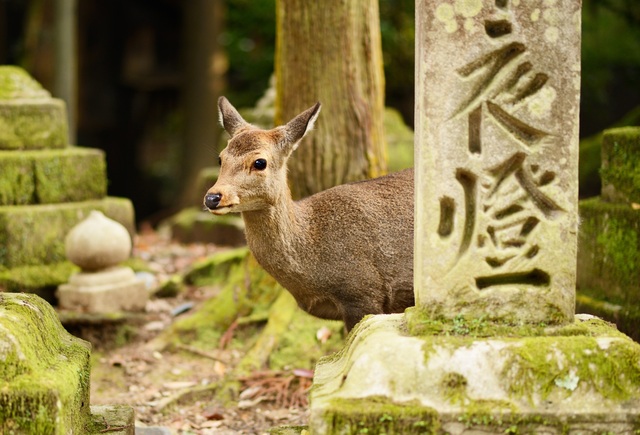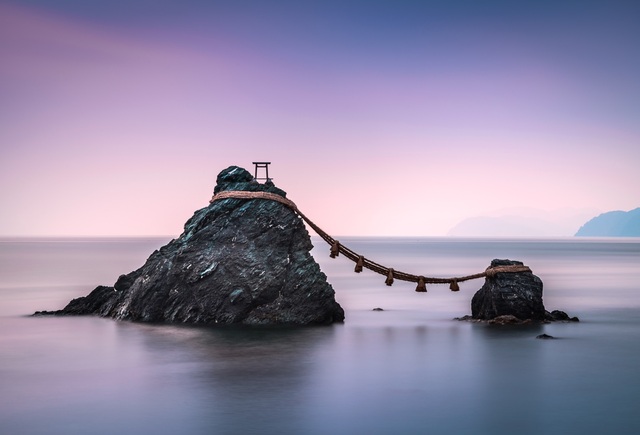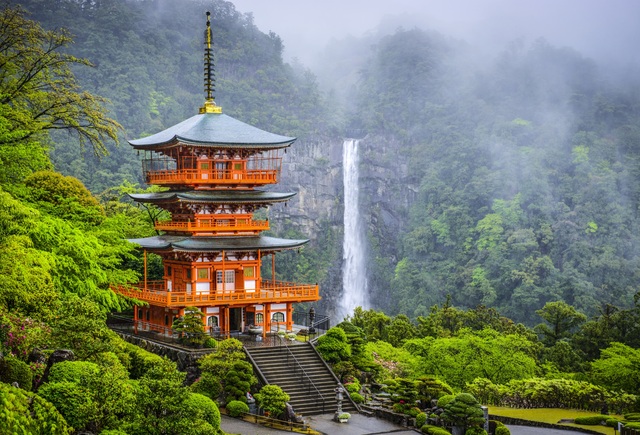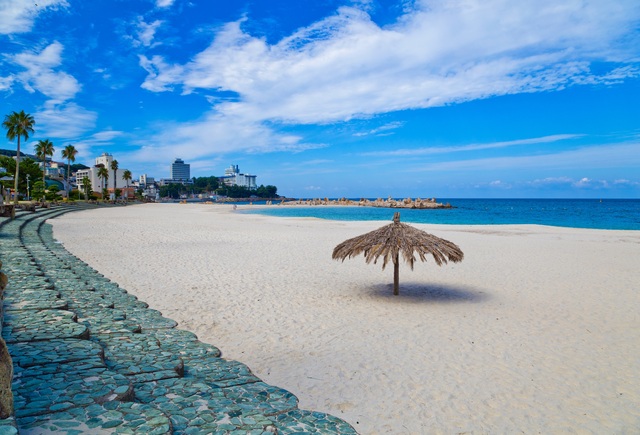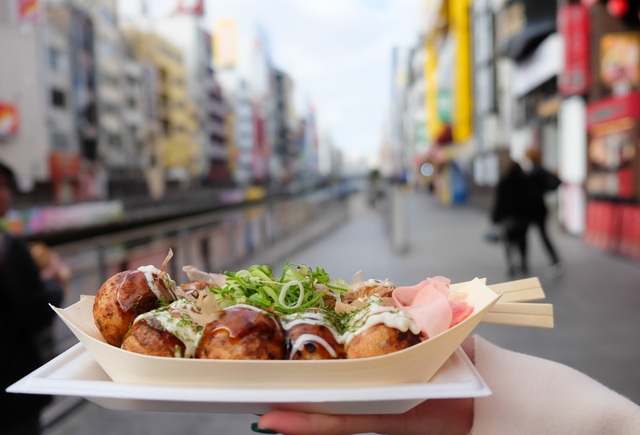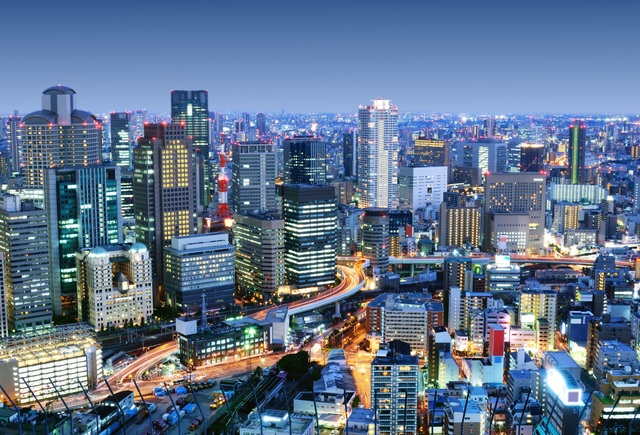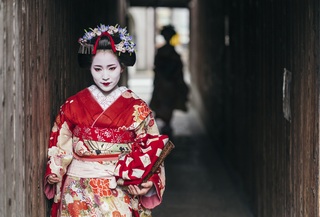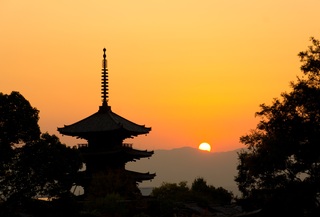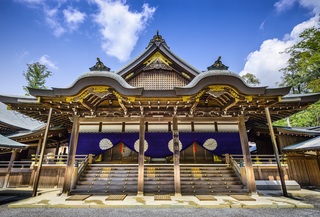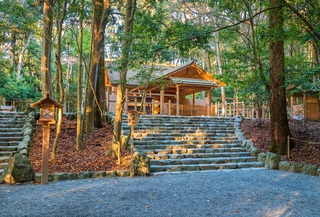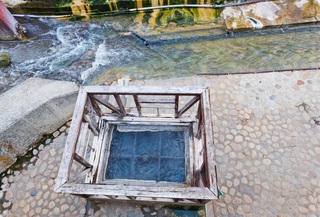Nature and Hot Springs
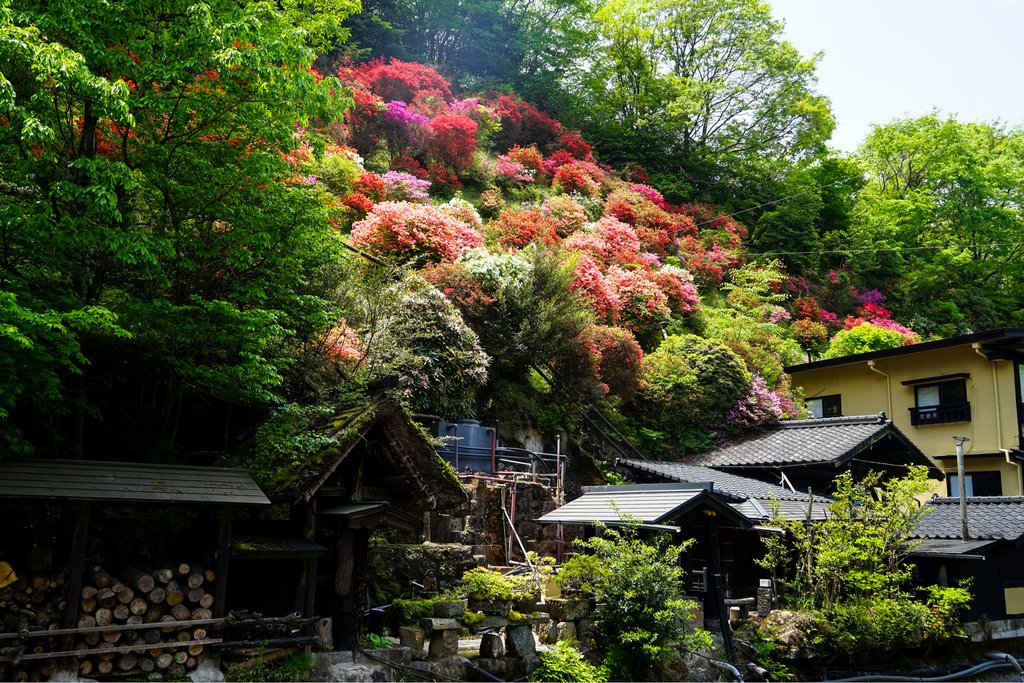
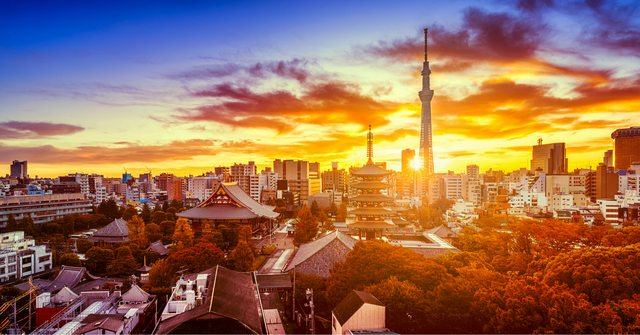
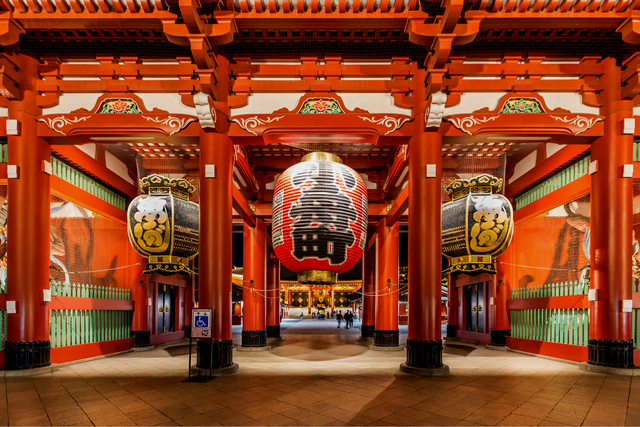
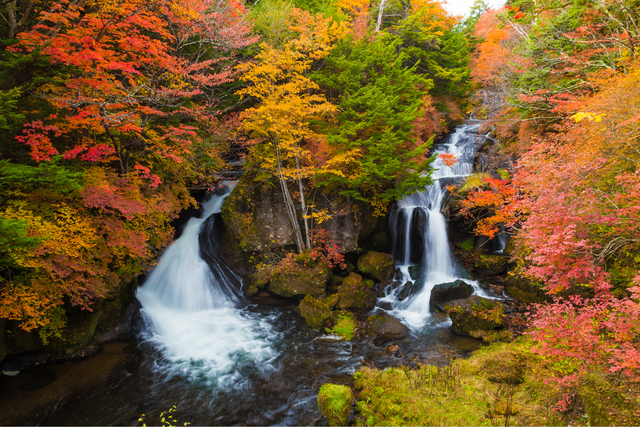
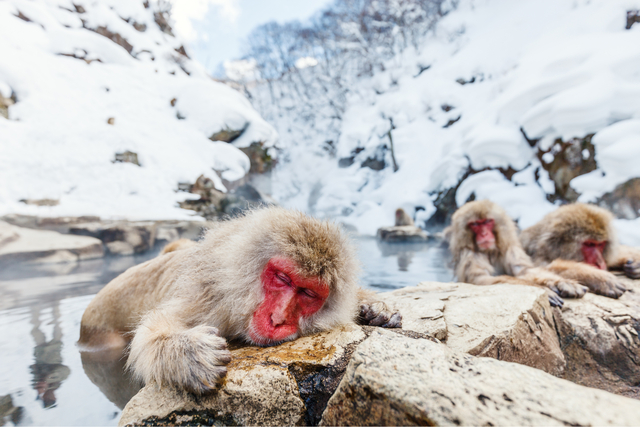
- Culture
- History
- Nature
Overview
Explore Japan's incredible nature and embrace the nation's onsen culture.
This tour is best in autumn when the landscape changes to an explosion of a beautiful palette of gold, red, brown, orange and yellow.
Suggested itinerary
Today you'll depart Europe for Japan, so get ready for a seasonal adventure you'll never forget.
After you arrive at the airport, you'll transfer (shared taxi or airport limousine bus) to your central Tokyo hotel. If you have the energy, take a relaxed stroll through Happo-en or Hamrikyu, two beautiful Japanese gardens.
Get up early and visit the outer fish market in Tsukiji! Once you arrive, you can enjoy a sushi breakfast.
Not very far from the Tsukiji Fish Market, you will find Asakusa, one of Tokyo's older classical neighbourhoods, where a visit to the impressive Senso-ji (or: Asakusa Kannon) temple is a must. Leading up to the temple, you will find Nakamise Street, which is lined on both sides with shops selling traditional souvenirs, snacks and sweets.
Today is a great chance for a day trip. Take a train from the Asakusa area to Nikko, located in the Tochigi prefecture, about 150 kilometres north of Tokyo. This UNESCO World Heritage Site is located between colourful hilly forests, scenic lakes and impressive waterfalls of Nikko National Park. The Ryuzu Waterfall is another popular (autumn colour) spot.
Nikko is also home to one of the most fascinating of all of Japan's UNESCO World Heritage-listed shrines, Toshogu Shrine, a mausoleum for shogun Tokugawa Ieyasu, the great military leader (and country unifier) of the early 17th century.
An alternative option is Kamakura. Easy to reach by train. Besides the gigantic bronze Buddha at the Kotoku-in temple, there are 65 Buddhist temples and 19 Shinto shrines in this historic town.
Another option is a stroll through Kawagoe's old trading district in Saitama, where you will find 'kura' buildings and Kita-in, an ancient temple containing the only remaining parts of the Edo castle. Kawagoe is also called 'small Edo', where you still can find the atmosphere of the 19th century Edo time.
If you want more fun, visit Yokohama's futuristic harbour, where you can find Asia's largest Chinatown and the popular Cup Noodle Museum.
Today you'll leave Tokyo and continue the journey by train in a westerly direction to the Japanese Alps to Yamanouchi, better known as Yudanaka.
This ancient resort is home to many onsen (hot springs). Unwind in one of the hot springs, the perfect antidote to the hustle and bustle of Tokyo.
Today you will stay for the first time in a ryokan, a traditional Japanese inn where breakfast and dinner are usually included.
After a traditional Japanese breakfast, you can walk to the adjacent Shibu Onsen, a historic onsen village with beautiful narrow streets. Some of the ryokans in Shibu are more than 400 years old. Further uphill is Jigokudani Monkey Park, very famous for the colony of wild Japanese macaques, also known as snow monkeys, who live around the area and relax in their own hot spring.
Travel by train from Yudanaka to Kanazawa, passing through Nagano along the way. We recommend making a short stop just before Nagano Station to visit one of Japan’s most beloved temple complexes, Zenkoji Temple — just a 10-minute walk from Zenkoji-shita Station — before continuing your journey. The journey continues by train to Kanazawa, a beautiful old town located between the Japanese Alps and the Sea of Japan.
Kanazawa's local cuisine is famous throughout Japan, especially its seafood dishes, due to its prime location on the Sea of Japan. If you are a fish and seafood lover, you absolutely should not miss the fish market Omicho Ichiba or the many sushi restaurants.
Today you have a whole day to spend in Kanazawa. You can start the day with a walk around and through the Kanazawa castle. Surrounding the castle, you will find Kanazawa Castle Park and the beautiful Gyokusen Inmaru Garden (and Gyokusen-an tea house).
Opposite the castle, you have the Oyama-jinja shrine, and a stone's throw away, you will find the Kenrokuen garden, one of the three most beautiful landscape gardens in Japan.
Take a walk through the old samurai district, Nagamachi, one of the best-preserved samurai neighbourhoods in Japan. Later, head over to the old Higashi Chaya district. This atmospheric neighbourhood is home to elegant restaurants, craft shops and geisha houses. If you are interested in art, visit the spectacular 21st Century Museum of Contemporary Art.
You can also take a day trip from Kanazawa to Kaga Onsen; this photogenic rustic village is known for its many high-quality hot springs.
Today it's off to Kyoto, the city best known as the cultural heart of Japan, home to ancient temples, Zen gardens and palaces.
From the 131-metre-high Kyoto Tower, you'll have a beautiful view of the city. From there, you reach Honganji Temple on foot. This complex covers a small area, including the west and east sides of the temple and the beautiful Shoseien garden. Afterwards, you can visit the Nijo Palace and the impressive Imperial Palace.
In the middle of Kyoto, you will find an oasis of peace in the Imperial Park, garden and the Palace, and here you can enjoy a view of the Higashiyama Mountain range.
If you're still craving a hot spring experience, head to the forested hills of northern Kyoto and spend the day in Kurama. After a gentle mountain hike through cedar-lined trails and temple grounds, reward yourself with a soak in the soothing waters of Kurama Onsen — ideal for a restorative day trip.
If you desire more hiking, explore the Kuramadera Temple and its surroundings, then trek over to Kibune on the other side of the mountain, where you'll find riverside restaurants with flowing noodles (nagashi somen, a summer staple), and the mystical Kifune Shrine with its lantern-paved stairs. Finally, descend the road to Kibuneguchi Station, from where you'll easily get back to central Kyoto.
Alternatively, explore Arashiyama and the Sagano area on one of our guided excursions. Arashiyama, famous for the Bamboo Grove and its Zen temples, is also blessed with hot springs. After exploring the hidden gems of the area, seek a hot spring close to the Katsura River, and unwind for the rest of the day.
After breakfast, head over to Fushimi Inari Shrine, the iconic shrine characterized by its thousands of red gates. In the south of Kyoto, you will also find the Hieizan Enryakuji , A temple built in 792, founded by the monk Saicho. The temple once belonged to the most powerful monastic fortress, it was initially built to protect Kyoto from dark forces.
Also, well worth a visit is Daigo-ji, where you will find the Sanpo-in temple. In the complex, you will also find a pagoda dated from 957. It's one of the last two pagodas from the Heian period.
You can also take a trip outside of Kyoto. Take a trip today to traditional Nara, where the Todai-ji, one of Japan's oldest and largest wooden temples, can be found. Next to the temple complex is Nara Park, home to many friendly, free-roaming deer.
Travel by shinkansen (bullet train) to Hiroshima. Hiroshima is a modern city with an authentic heart and resilient character. Pay a visit to the Atomic Bomb Dome and the impressive Peace Memorial Park. In the area, you'll also find several memorials such as the Children's Peace Monument (known for the 1000 origami paper cranes), the peace bell and the peace flame.
In the afternoon you can visit Hiroshima Castle. Inside the castle, there is an exhibition about the history of Hiroshima Castle and Japanese castles. In the evening, be sure to try Hiroshima's speciality, okonomiyaki, a much loved local soul food.
A special way to spend this day is to take a trip to one of the most beautiful places in Japan, Miyajima. This small island is famous for its Itsukushima Shrine, whose large red gate of heaven or torii stands proudly in the sea in front of the shrine.
Take the time to discover the other shrines of this island, like the Daisho-in Temple (beautiful complex with Buddhist sculpture) and Senjokaku (large wooden hall).
Via the ropeway or one of the three hiking paths, you can reach the highest peak of Mt. Misen, where you will be treated to a beautiful view over the island.
Today you'll continue to Kyushu, to first visit Kurokawa Onsen, a stunning town nestled in a valley surrounded by misty mountain landscapes and is one of the most attractive mountain villages in Japan.
Enjoy the beautiful view of the coloured slopes of the mountains along the way. Kurokawa's village has very well preserved its authentic and rustic atmosphere and is known for its beautiful hot springs of Japan, where you can relax in the open air, in the middle of the serene nature. Besides the hot springs, the area offers beautiful hiking trails.
Kurokawa Onsen is located not far from the incredible Mt. Aso, an active volcano whose caldera is one of the largest in the world. Mt. Aso's Nakadake crater in the middle is spectacular and still emits sulfur vapour and gases.
The Kuju Mountains also offer hikers many beautiful routes along the mountain peaks, the beautiful valleys and a vast swamp. This area is a paradise for outdoor lovers.
Today you continue to Yufuin and Beppu, famous hot spring and onsen villages.
Yufuin is a trendier onsen resort with elegant accommodations, boutique, summer festivals, museums and galleries. The area around it is characterized by rice fields, farms and a strong rural character but is dominated by the two peaks of Mt. Yufu.
Beppu has become the onsen capital of Japan and is blessed with more hot springs than anywhere else in the country. There are even some spectacular springs called the "Beppu Hells", which you can visit and admire the unique colours. All the 'hells' have different functions and mineral compositions and are located within walking distance of each other.
You say goodbye to the volcanoes, leave the lava fields and the spas, and travel by shinkansen to Fukuoka. Because the city is so close to the mainland of Asia, many foreign influences can be found here on the local culture and cuisine.
The city is famous for its yatai food stalls where you can enjoy delicious typical street food. Fukuoka is also home to Japan's oldest Zen temple, Shofukuji, which dates back to 1195.
Around Fukuoka Castle and Ohori Park are the best places in Fukuoka to stroll along beautiful lakes, pavilions and islands and take in the views of the city.
Today we have to leave Japan, departing from Fukuoka. We hope it's been an inspiring adventure that leaves you wanting to return for more.
Accommodation
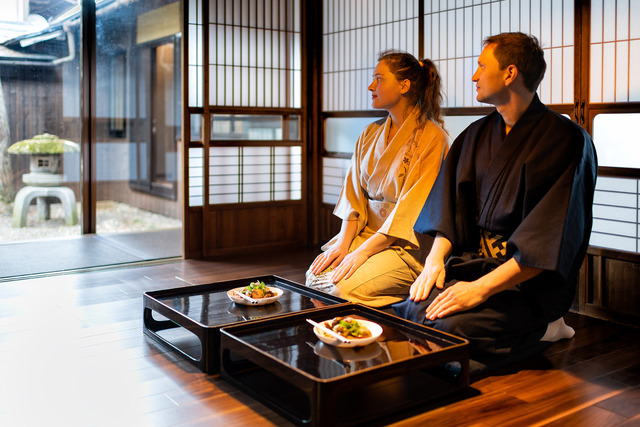 + 5 Photos
+ 5 Photos
A ryokan is a traditional Japanese inn that offers a unique cultural experience. Guests sleep on tatami mats, enjoy traditional meals and may have hot springs & gardens.
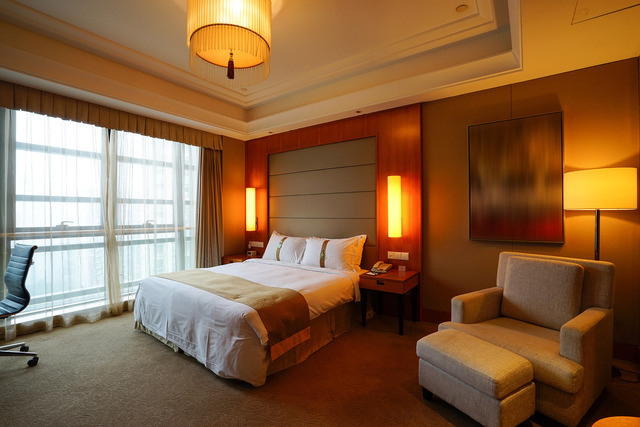 + 5 Photos
+ 5 Photos
Western-style hotels in Japan offer comfort and convenience with amenities like room service and fitness centres. Many are located in major cities and near popular destinations.
Important information
Important information
- Travel insurance is optional. Let us know if you’d like help adding it to your trip.
- The itinerary shown is an example. We’ll tailor the tour to fit your interests and travel style.
- Once you get in touch, we’ll fine-tune the details together to make sure the trip suits you perfectly.
What is included
- International return flight tickets
- Checked luggage
- Airport transfers
- 11 nights in western style accommodations
- 5 nights in Japanese-style Ryokan with onsen
- Breakfast and dinner (selected locations)
- Transport tickets between destinations
What is not included
- Local transport (buses, metro, taxis)
- Local city tax which needs to be paid on the spot
- Optional excursions and sightseeing tours
- Travel insurance


